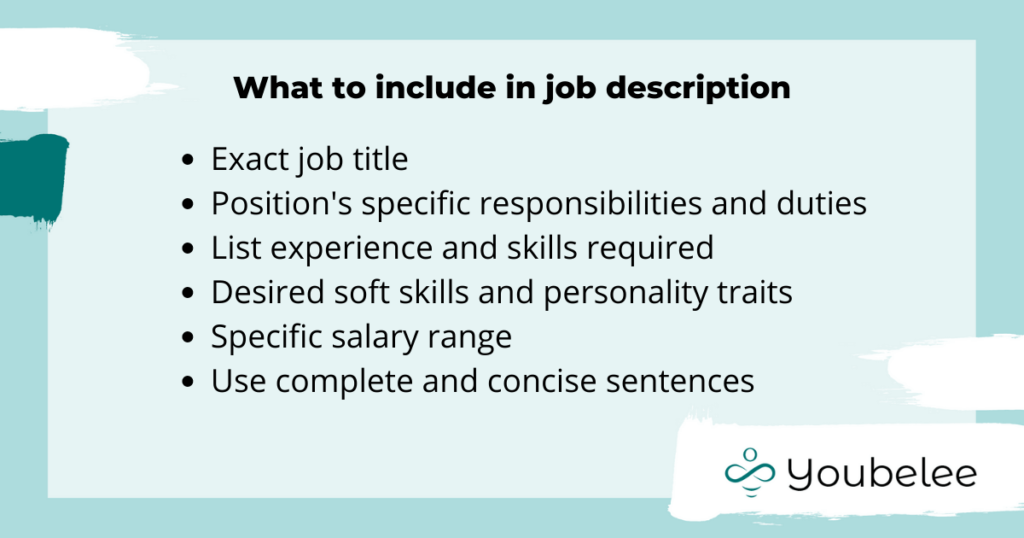
Millennials and younger generations are becoming a more dominant works force. And unlike previous generations, they are much more willing to talk about how much they earn. As a result, many companies shift gears and start posting more detailed salary job descriptions in their listings.
One of the most important things new employees will want to know about a job is its compensation.
According to Andrew Chamberlain from Glassdoor, the main predictor of workplace satisfaction is not salary. However, it remains one of the main factors for people searching for a new job.
This dilemma about salary range inclusion in the job description is trending among human resources managers. That is why we would like to discuss terms like salary range, and transparent salary.

What is the salary range?
Simply put, the bare minimum and the highest maximum employees will be paid once hired by a company. So, for example, if your potential employee posts a figure between $100,000 and $120,000. This means they expect their annual salary to be somewhere between that range. This is an excellent bargaining tool for potential employers or whoever hires.
How to find salary ranges for a job?
When posting a salary range for any position, you have to research. If you are offering below the industry standard, you won’t attract any potential employees for the position. Not only that, but your retention rate will be too low. And eventually, you will start to lose your employees to your competition.
You also need to consider some additional factors when determining a salary range. Consider the region you are hiring from, the demographic, and the competition. Some big companies have an entire salary structure set up concerning one another to compensate their employees fairly.
How to write salary in the job description
You can post the desired salary job description in a few ways when you put together your job listing. Let’s explore four ways you can do it and what they will tell your future employee.
1. If you place it at the very top, you will emphasize the salary for the job. This will mean your compensation is highly competitive with other similar or identical jobs on the market.
2. When you place it at the bottom, it’s to let your potential job applicants know their compensation range and downplay it. Doing it this way will highlight other benefits your listing offers other than the pay. When you do it this way, make sure you include an opportunity for advancement not to dismay any potential qualified customers away.
3. When placing a salary within the body of a job description, you need to explain further why it will vary for different candidates. For example, a person with a higher degree might do the job better than the person without it, so you need to compensate for it differently.
4. If you use it in bullet points, it means you will gladly inform the candidate of the salary, but that is just one of the considerations for the job. You might want to list other benefits in the section about compensation.

The Pros and Cons of Including a Salary Description
Cons of including a salary job description
When potential employees see the salary, they can ignore some other benefits listed. This is because the focus will be only on the lower wage and not on the different job opportunities or benefits. On the other hand, when the salary is too high, they might ignore some of the red flags and may not fit well in the company culture.
Employers have less wiggle room to negotiate when you post a salary range. Essentially companies tend to omit salary in job descriptions to take care of their bottom line. This way, a company can offer some employees with more desirable skills a higher wage and a lower one to those who don’t.
Other employees will see the listing and feel the need to renegotiate. If your job listing for an existing opening in your company pays more to new hires than to your senior staff, this can cause a lot of friction.
Pros of including a salary job description
Many candidates today will only apply if a job description with a salary range is listed. People tend to believe they will be undervalued and underpaid if their employer doesn’t add how much they will be compensated. A company can miss out on many qualified candidates because they feel comfortable in their current job and can’t visualize switching right away.
As we mentioned above, millennials, on the whole, value job transparency. So even if the salary might be substandard, the idea that a company isn’t hiding it means it isn’t just doing it to undercut its employees.
Keep things fair and balanced. When you include a salary in a job description, you are more accountable. If the compensation is the same for everyone, a company can have a much harder time discriminating against its potential new hires based on sex, age, religion, race, etc.
Conclusion
Whether or not an employer will list a salary in their job description always depends on their needs. But as more and more people demand fair treatment, the old taboos about salaries seem to matter less to newer generations of the workforce. There are even bills like the one in New York which even require that a salary be included in any job description. This will certainly increase transparency and fairness, and it seems to be the way of the future.
